Waiting room #4
-
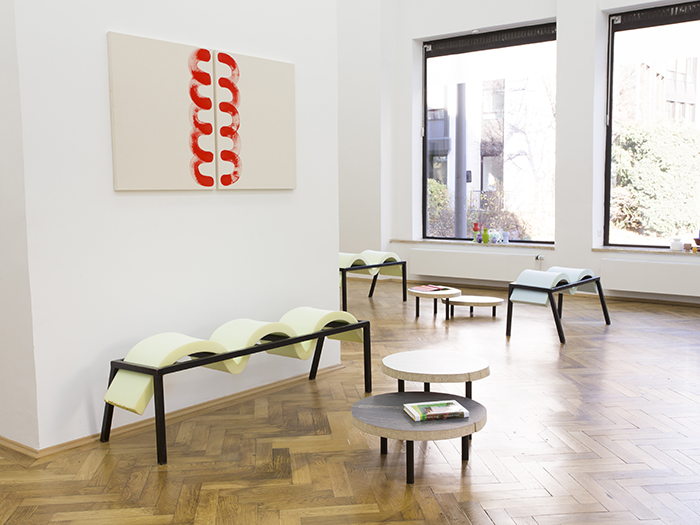
Peintures et mobilier : Elvire Bonduelle
-
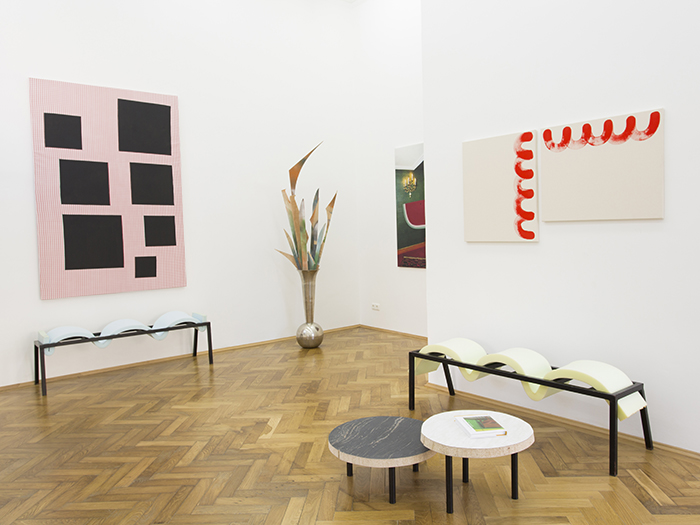
De gauche à droite, N. Chardon, E. Vappereau (vase), A. Polazzo & E. Bonduelle
Now in its fourth iteration, Elvire Bonduelle’s ongoing curatorial project “Waiting Room” transforms gallery spaces into temporary reception areas where visitors can indulge in the kind of concentrated viewing typically only possible when one has time to kill. Bonduelle sets the stage with her own sculptures, black metal benches festooned with Styrofoam in bleached hues of blue, honeydew, and buttercream, attended by oval MDF tables, finished with surfaces suggesting white marble or speckled granite. Amedeo Polazzo’s appealingly plain ceramic vessels cluster along the windowsill, while in the far corner, Émile Vappereau’s des fleurs (some flowers), 2015, stocks an oversize aluminum vase with sprigs of spray-painted wood. When it comes to the wall-mounted work, Bonduelle purposefully avoids prioritizing process over product. The paintings revel in their own simplicity, the method of their making immediately evident, even to an untrained eye. François Morellet’s La chute des angles n° 2 (The fall of angles), 2002, tests simple manipulations of L-shaped strips of black paper, while Bernard Piffaretti’s o.T., 2013, is divided down the middle, with the thick swatches of red, yellow, and green paint from one side of the canvas replicated by hand on the other. For his series “Tutti Frutti,” 2015, Nicolas Chardon applies a thin coat of white acrylic to gingham fabric, painting in sections of the patterned grid to create monochrome blocks, while Bonduelle echoes the Styrofoam waves of her benches for the diptych Frise n° 22 A, B, 2015. While there is something laudable in the attempts to advocate a more substantial engagement with the internal rhythms of seemingly quiet compositions, “Waiting Room” ultimately risks implying that these works require a captive audience.
Kate Sutton, Artforum, 2016 -
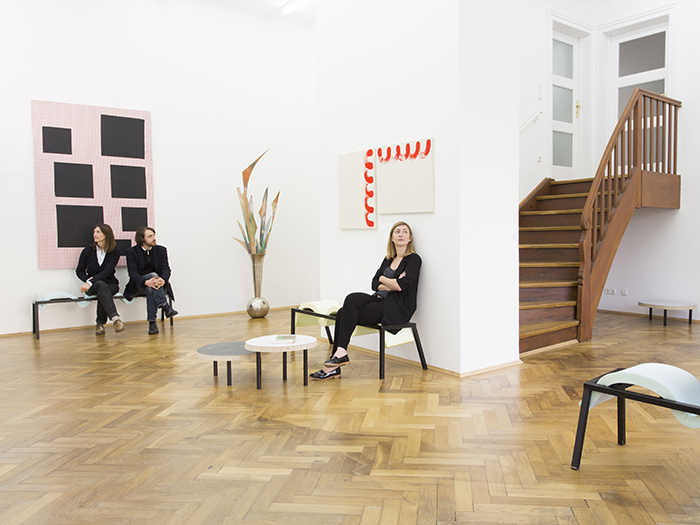
Peintures : Nicolas Chardon et Elvire Bonduelle, mobilier : Elvire Bonduelle
-
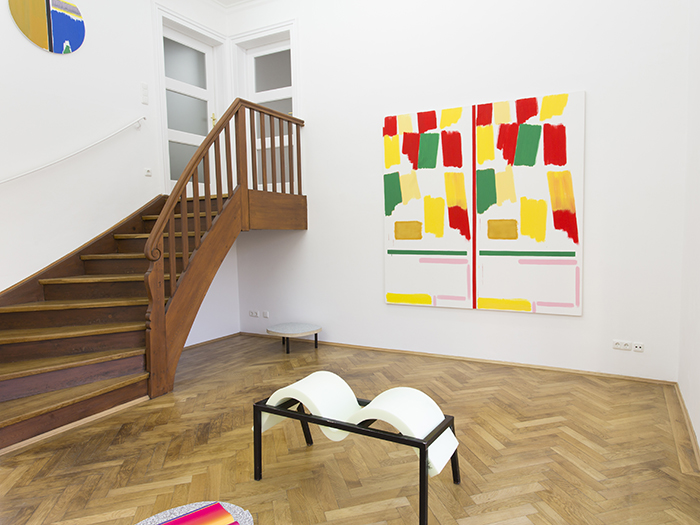
Peintures : Bernard Piffaretti, mobilier : Elvire Bonduelle
-
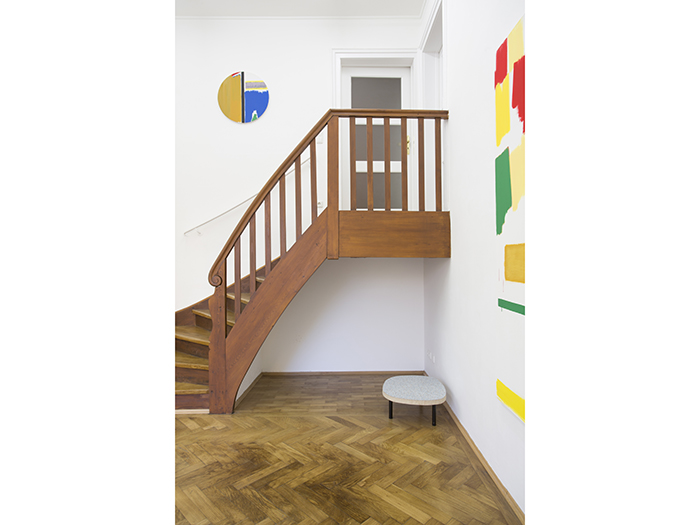
Peintures : Bernard Piffaretti, table : Elvire Bonduelle
-
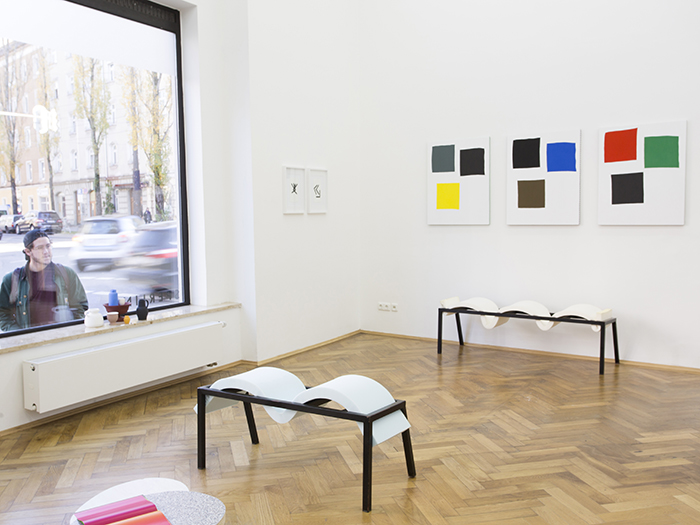
Peintures : Nicolas Chardon, mobilier : Elvire Bonduelle
-
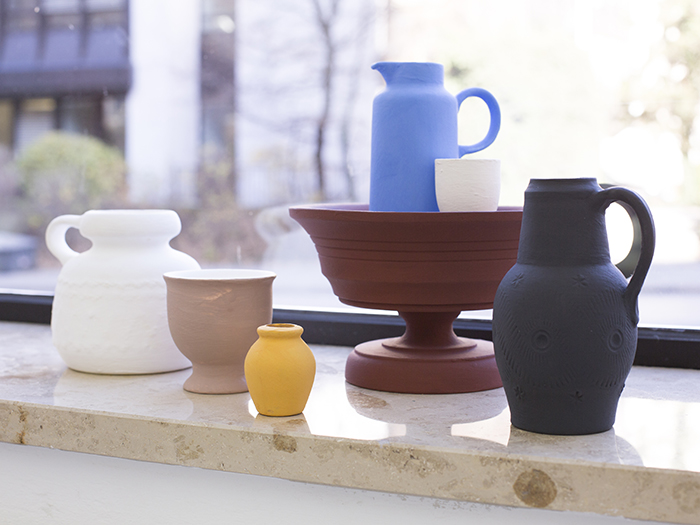
Amedeo Polazzo
-
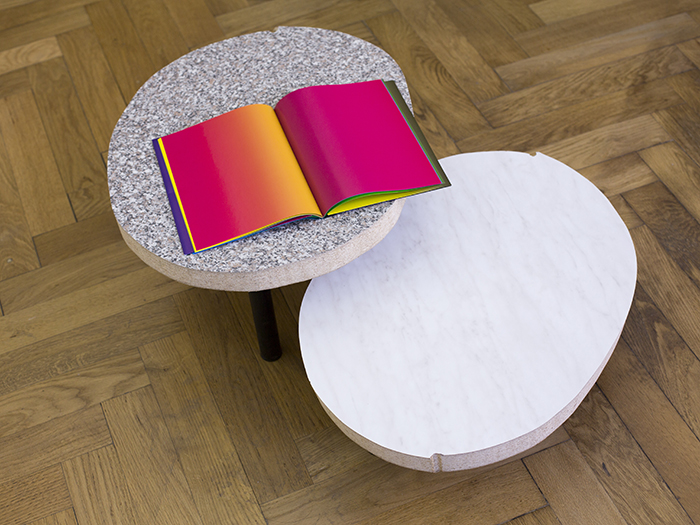
Edition : Olaf Nicolai, tables : Elvire Bonduelle
WAIT AND SEE.
Twenty days ago, Elvire Bonduelle and I had an Espresso in the corner of a bus station in Torino, where she gave me the book she published with her Parisian gallery Laurent Mueller. It inherits fifteen excerpts chosen by friends of the artist, with a portfolio of Salle d’Attente III, to which Waiting Room #4 belongs in a very subjective, personal tradition to which Elvire Bonduelle has been curating her own shows.
A quote by Donald Judd is the first key to enter the concept of the series on the ideal spatio-temporal parenthesis for seeing art; every curator fantasizes with the means and possibilities of this topos. To her, waiting rooms are the ones to end with the dilemma. “We see nothing”, she says when we have to force our gaze into the thirty seconds or the few minutes we dedicate to art pieces during a museum- gallery or an off-space visit. But in waiting rooms, we do not control time, and Bonduelle works are to be seen as an invitation to relax; “to exit the relationship of domination that everyone wants to exert on events”.
You could tell, Bonduelle’s gaze demands slowness and physical inactivity to appreciate the works; because we are easily distracted by other people and our own thoughts, art turns into a negligibility. The Rijksmuseum in Amsterdam has hung a huge banner with a prohibition sign for cameras on Saturdays, so people start drawing what they see. As the majority of spectators now use a smartphone as a compensation for the lack of will to contemplate art, to immerse our thoughts in what we see transforms into the challenge. Bonduelle doesn’t force the gallery visitor to put the camera away, but rather to enter the state of simulacrum that a waiting room provokes. The idea of the waiting room as the possible space for comfortable contemplation doesn’t reduce itself to the medical context, but the spaces we know we get to only wait: A metro/bus station, the anteroom to the toilettes were we can look ourselves at the mirror, the transit zones at airports.
Oscar Santillán said something at a dinner referring to waiting rooms also as a state of mind. A waiting room can thus be the blue notifications on Whatsapp, the status of the other person while typing, the green/grey dots that tell us on facebook who is online and who isn’t.A waiting room in Bonduelle’s terms can be compared with the neon installation of Flaka Haliti at Prince of Wales “I see that you have seen that I have seen”(your message), or the platonic and futuristic western scenario at ‘The Good, the Bad and the Ugly’ from Konstantin Grcic.
The furniture pieces Bonduelle presents in a way they’re an excuse to reevaluate the means of introducing an artwork into a space that is already habited by other objects. The naked foam and the asymmetric chair legs near the vases of Amedeo Polazzo combine the unintentional gesture with conceptual perfectionism, while the so called Tutti-Frutti canvases of Nicolas Chardon converts the abstract use of color surfaces, into extent of body movements as if they would literally dance out of the wall."(…) I would admit that at the origin of the waiting room concept, are two very personal handicaps: A great difficulty in concentrating without being alone, and a fairly poor circulation mean standing-still for long periods of time is uncomfortable."Émile Vappereau’s sort of palm tree, out of residual pieces in a huge metal vase and the color field magazine of Olaf Nicolai, mimetize certainly that random situations of watching something unintentionally and suddenly realizing the material masquerade-game the artists play.
Bonduelle’s request could be understood as an egoistic act, as the subjectivities of the erratic way things installed at Sperling are subordinated to the artist’s stoic pursuits. It could be formulated the other way around: It is actually an exceptional offer to discover something beyond the exhibition by sitting in the chairs she makes, while her canvases can be rotated, putting the genealogy of painting as a certain absurdity, but also creating a very unusual atmosphere in a gallery: The sense to the spectators that whatever we do – sit, stand or hang around - it will influence the space.
Marià Inès Plazo, Reflektor-M, 2015 -
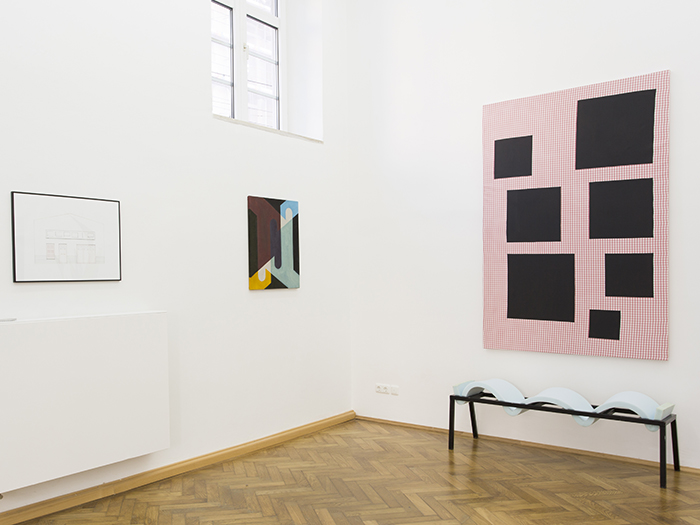
Peintures : E. Vappereau (gauche) et N. Chardon (droite), banc et dessin : E. Bonduelle
-
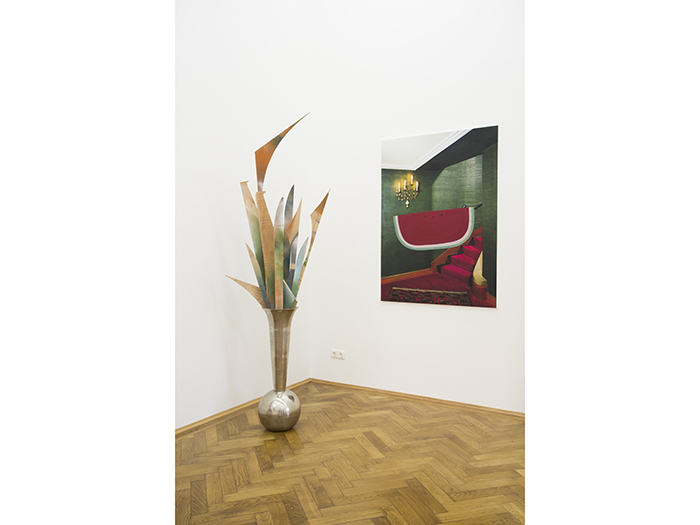
Vase : Emile Vappereau, toile : Amedeo Polazzo
-
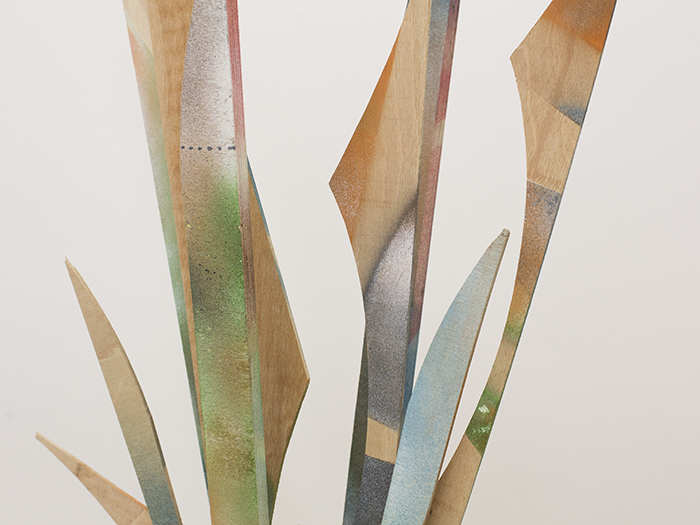
Emile Vapperau (détail)